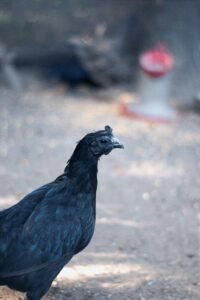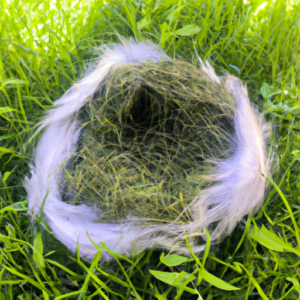
So you’ve found yourself with a chicken in your backyard and you’re wondering, just how old is this feathered friend of yours? Determining the age of a chicken might seem like a perplexing task, but fear not, as there are a few key indicators that can give you a clue. From examining the bird’s physical features to observing its behavior, join us on a fascinating journey as we uncover the secrets to age estimation in chickens.
Factors to Consider in Determining Chicken Age
Determining the age of a chicken can be a challenging task, especially if you don’t have any reliable records or information about its background. However, there are several factors that can give you an idea about the approximate age of a chicken. By observing different aspects like feather development, comb and wattle growth, leg color, spur length, egg production, physical size, behavioral changes, feather coloration, molt patterns, and eye color, you can gather clues that will help you estimate the age of your feathered friend. Let’s dive into each factor in detail.
Feather Development
Feather development can offer valuable insights into a chicken’s age. Young chicks typically have fluffy down feathers when they hatch, and as they grow older, these down feathers are replaced with primary feathers. Over time, secondary feathers start to emerge alongside the primary ones. By examining the presence of down feathers, primary feathers, and the overall condition of the plumage, you can make a rough estimate of a chicken’s age.
Comb and Wattle Growth
The development of a chicken’s comb and wattle can also provide clues about its age. Comb and wattle growth is influenced by hormones, and they gradually develop and change as chickens mature. Chicks start with small, smooth combs and wattles that gradually grow larger and become more pronounced as they age. By observing the size, shape, and coloration of the comb and wattles, you can make an educated guess about the chicken’s age.
Leg Color
Another factor to consider is the color of a chicken’s legs. Leg color can vary depending on the breed, but it can also change as chickens age. When chicks are young, their legs often have a lighter, yellowish hue. As they grow older, the leg color may darken and become more prominent. By comparing the color of a chicken’s legs to known age standards or breed characteristics, you can estimate how old the chicken might be.
Spur Length
Spurs are small, horn-like growths that develop on the legs of some chicken breeds, primarily in roosters. These spurs can provide valuable information about a chicken’s age. Spurs tend to grow longer and thicker as roosters mature, with noticeable differences in length between young and older chickens. By measuring the length of a chicken’s spurs, particularly in roosters, you can get a general idea of its age.
Egg Production
Egg production is a crucial factor when it comes to determining the age of a laying hen. Hens typically start laying eggs at around 5 to 6 months of age, although this can vary depending on the breed and individual characteristics. As hens get older, they may show a decline in egg production. By examining a hen’s laying pattern and the quality of the eggs, you can estimate its age within a certain range.
Physical Size
The physical size of a chicken can also offer some insights into its age. Most chickens grow rapidly during the first few months of their lives, and their size can be a good indicator of their age during this period. However, as chickens mature, their growth rate slows down, so relying solely on physical size becomes less accurate. Nevertheless, comparing a chicken’s size to known age standards or considering its overall body proportions can still give you a rough estimate of its age.
Behavioral Changes
Observing behavioral changes can be a useful way to assess a chicken’s age. Young chicks often display more curious and playful behavior, while older chickens tend to be more settled and experienced. As chickens age, they may also exhibit behavior related to mating, broodiness, or territoriality. By observing and interpreting these behavioral changes, you can gain insights into the approximate age of your chicken.
Feather Coloration
The coloration of a chicken’s feathers can provide valuable clues about its age. Young chicks often have soft and vibrant feather colors, which may become duller or change as they age. Feathers can also show wear and tear over time, potentially indicating an older bird. However, it’s important to note that feather coloration can be influenced by other factors such as genetics and environmental conditions, so it should be considered in conjunction with other age-determining factors.
Molt Patterns
Molting is a natural process in which chickens shed and regrow their feathers. The molting pattern and frequency can give you an idea of a chicken’s age. Young chickens generally go through their first molt at around one year of age and continue to molt annually. By examining the molt patterns and the condition of the feathers, especially during molting periods, you can estimate a chicken’s age within a certain range.
Eye Color
Although less reliable than other factors, eye color can sometimes provide minor insights into a chicken’s age. Young chicks often have lighter, brighter eye colors that may darken or intensify as they mature. However, eye color can be influenced by various genetic factors and may not always correspond directly to a chicken’s age. Therefore, it should be considered in conjunction with more reliable age-determining factors.
Methods for Determining Chicken Age
While the factors mentioned above can give you a rough estimate of a chicken’s age, there are specific methods that can provide more accurate results. By using techniques such as hatch date records, leg banding or wing clipping, physical examination, molt detection, ovary inspection, comb and wattle examination, spur measurement, pelvic bone assessment, egg quality assessment, and veterinarian assistance, you can determine a chicken’s age with greater precision.
Hatch Date Records
Hatch date records are one of the most reliable methods for determining the age of a chicken, especially if you have them from the time the chicken was hatched. With hatch date records, you can simply calculate the number of days, weeks, or months that have passed since the chicken hatched to determine its age accurately.
Leg Banding or Wing Clipping
Leg banding or wing clipping is a common practice among chicken keepers to keep track of individual birds. By attaching a numbered band or clipping a specific feather on a chicken’s wing, you can easily identify and record their age. This method is particularly useful when raising multiple chickens with different ages.
Physical Examination
A thorough physical examination can provide valuable clues about a chicken’s age. By evaluating the condition of the beak, legs, feet, feathers, and other physical attributes, a trained eye can estimate the age of a chicken based on characteristics that change over time, such as wear and tear, bone density, and general signs of aging.
Molt Detection
During molting periods, chickens shed and replace their feathers. By carefully observing the molt patterns and examining the condition of the feathers, you can gauge the age of a chicken more accurately. Specific molting patterns, such as the presence of pin feathers or the absence of certain feathers, can indicate that a chicken is at a particular stage of its life cycle.
Ovary Inspection
This method is primarily applicable to female chickens or hens. By examining the size, condition, and development of a hen’s ovaries, a veterinarian or a trained professional can estimate her age. Ovaries undergo changes throughout a hen’s life, and by assessing their size and functionality, experts can make an educated guess about her age.
Comb and Wattle Examination
The size, shape, and coloration of a chicken’s comb and wattle can indicate its age. When examining combs and wattles, experts look for signs of development, growth, pigmentation, and overall health. These factors can vary depending on the chicken’s age, helping determine its approximate age range.
Spur Measurement
Spurs are small, horn-like structures that develop on the legs of some chickens, primarily roosters. By measuring the length and thickness of a chicken’s spurs, experts can determine its age with a reasonable degree of accuracy. As roosters mature, their spurs tend to grow longer and thicker, providing valuable information about their age.
Pelvic Bone Assessment
Pelvic bone assessment is primarily used to determine the age of female chickens or hens. By examining the width and flexibility of a hen’s pelvic bones, experts can estimate her age. As hens age, the pelvic bones become wider and less pliable due to the repeated reproductive activities they undergo.
Egg Quality Assessment
Egg quality assessment is particularly useful when determining the age of a hen. As hens get older, the quality of their eggs may change. By evaluating factors such as shell thickness, yolk color, and albumen consistency, experts can estimate a hen’s age within a certain range.
Veterinarian Assistance
When in doubt or if you need a more accurate determination, consulting a veterinarian is always a good idea. Veterinarians have the knowledge and expertise to perform comprehensive assessments of a chicken’s physical condition and provide a more precise estimate of its age. They can perform various examinations, tests, and analyses that may not be accessible to the average chicken keeper.
Determining the age of a chicken can be an intriguing challenge for poultry enthusiasts. By considering factors such as feather development, comb and wattle growth, leg color, spur length, egg production, physical size, behavioral changes, feather coloration, molt patterns, and eye color, along with utilizing methods like hatch date records, leg banding or wing clipping, physical examination, molt detection, ovary inspection, comb and wattle examination, spur measurement, pelvic bone assessment, egg quality assessment, and veterinarian assistance, you can gather valuable information and make an educated estimate about your chicken’s age. Remember, while some methods provide a more accurate assessment, others offer a broader approximation.







